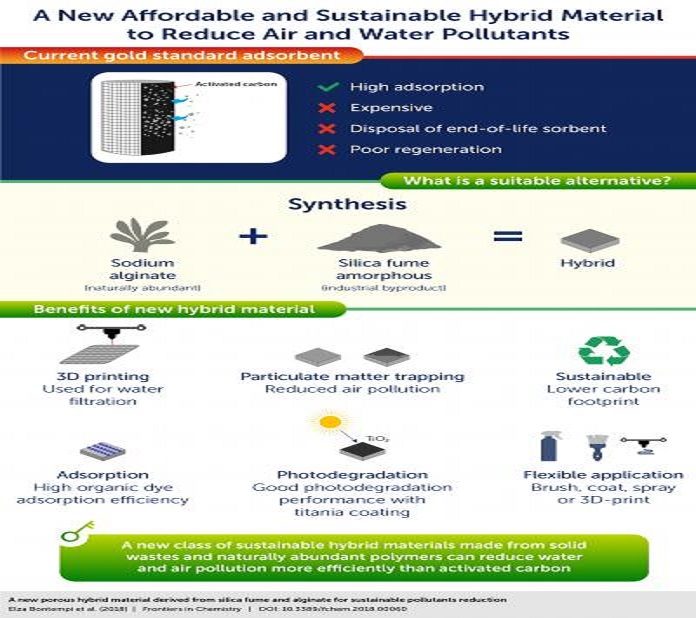Particulate matter, solid particles and liquid droplets found in the air and emitted from power plants, industry, automobiles, and fires, is ubiquitous in cities and even the countryside. Moreover, millions of tons of industrial effluents are released into the world’s waters every year. Both particulate matter and organic dyes are highly toxic to ecosystems and to humanity.
Activated carbon is the most common absorbent used to reduce both atmospheric and wastewater pollution, but is expensive to produce and regenerate. The challenge has been to find an economical alternative.
Scientists now have found an alternative to this. They have developed a new class of low-cost and sustainable green material that could possibly displace activated carbon as the preferred choice for reducing wastewater and air pollution. The material is integrated modestly with strong squander and a normally bounteous polymer – and can chop down toxins in air and wastewater with more accomplishment than actuated carbon, the flow highest quality level absorbent.
Scientists created the material by combining sodium alginate with a high-volume industrial by-product, silica fume to produce a “green” absorbent that is better than activated carbon. Testing of wastewater pollution was performed using methylene blue dye as a model pollutant. The hybrid material adsorbed and removed the dye, even at high concentrations, with 94% efficiency.
Lead author, Dr. Elza Bontempi from the University of Brescia, Italy said, “This paper shows the simple synthesis of a new porous hybrid material, obtained by using low cost and by-product materials. The material was designed on the basis of The European Commission’s request to develop an affordable, sustainable and innovative design-driven material solution that can reduce the concentration of particulate matter in urban areas.”
“The article reports preliminary results about the new material’s capability to capture particulate matter. It can also be used for wastewater remediation. In particular, its ability to replace activated carbon is demonstrated.”
Analyses revealed that, compared with activated carbon, production of the hybrid material consumed less energy (“embodied energy”) while leaving a much lower carbon footprint. The material also demonstrated encouraging capabilities for trapping diesel exhaust fume particulate matter.
The material can be connected as a covering, utilized for showering or brushing and utilized for 3D-printing. This implies it could be utilized to cover outer building surfaces to expel specific issue, and additionally to configuration water filtration units.
The material, described in Frontiers in Chemistry.
